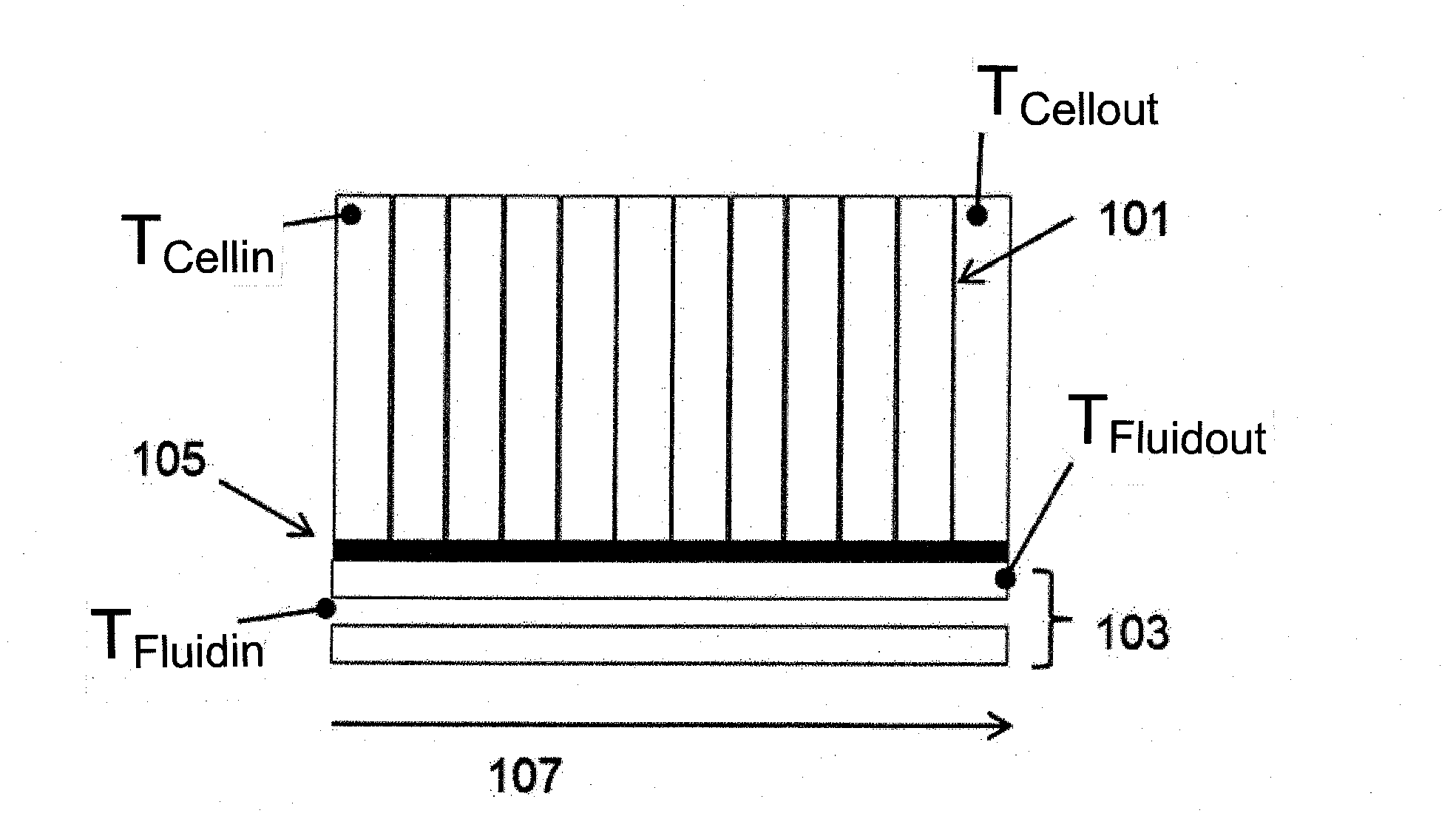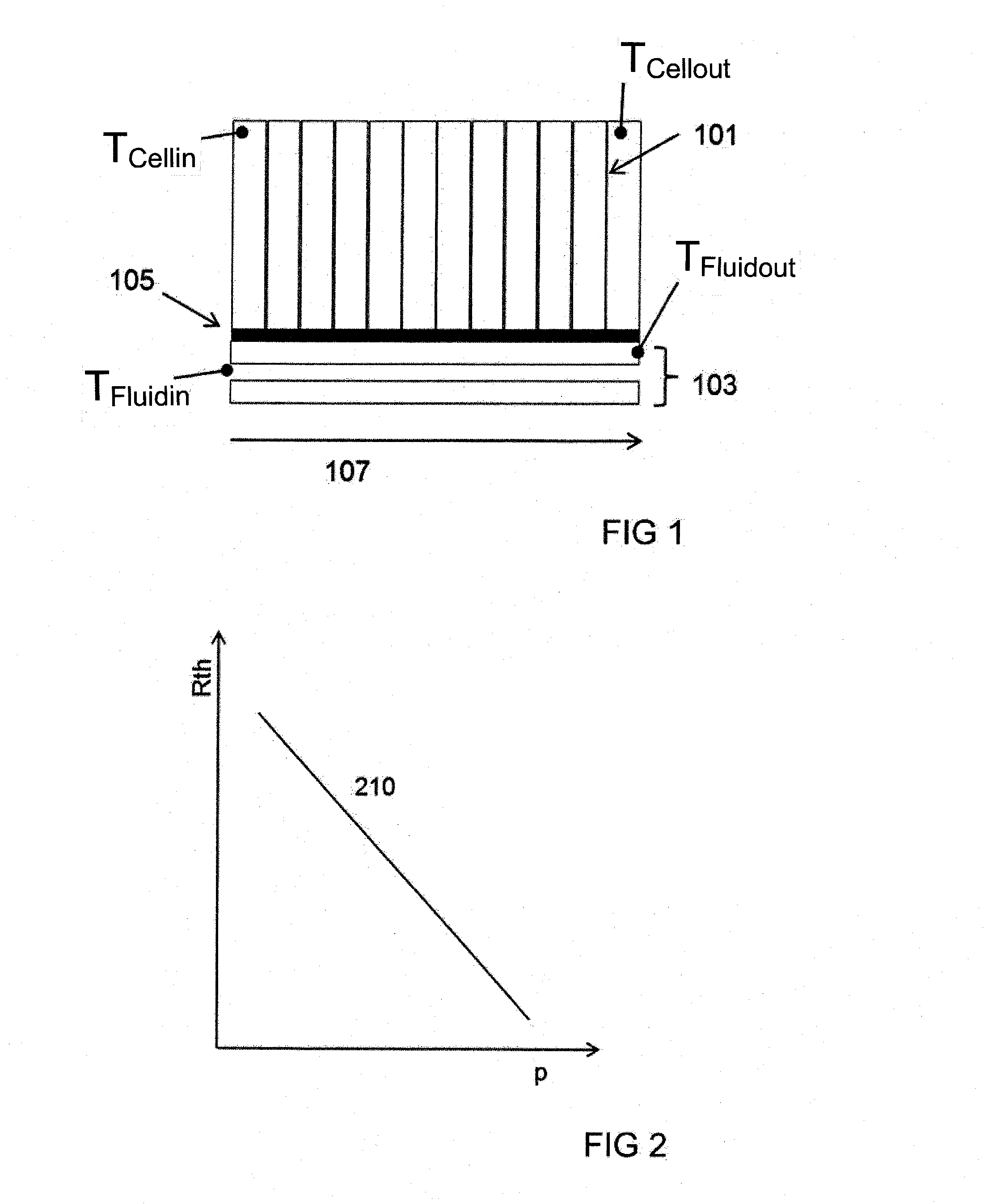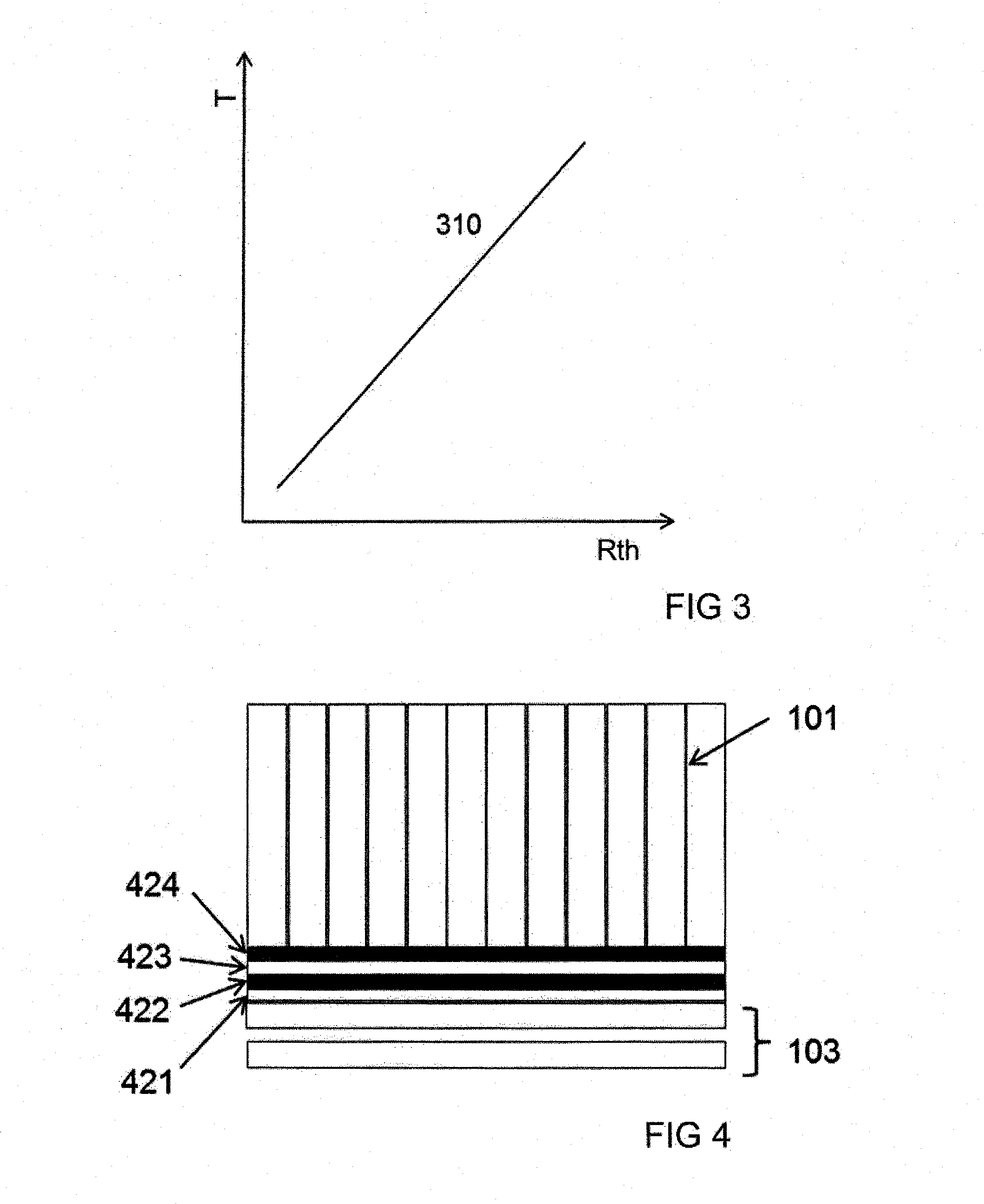Thermal transfer device, temperature-control panel, and energy storage device
a technology of temperature control panel and energy storage device, which is applied in the operation mode of machines, electrochemical generators, lighting and heating apparatus, etc., and can solve problems such as permanent damage to energy stores
- Summary
- Abstract
- Description
- Claims
- Application Information
AI Technical Summary
Benefits of technology
Problems solved by technology
Method used
Image
Examples
Embodiment Construction
[0041]FIG. 1 shows a cross-sectional illustration of an energy storage device according to an exemplary embodiment of the present invention. The energy storage device has an energy store in the form of battery cells 101, a temperature-control plate in the form of a cooling plate 103 with at least one flow channel, and a thermal transfer device 105, arranged between battery cells 101 and cooling plate 103, in the form of functional layers.
[0042]Battery cells 101 are arranged next to one another on a surface of an outer layer of the functional layers of transfer device 105. During operation of the energy storage device, a fluid can flow through the flow channel of cooling plate 103. A flow path length 107 or flow direction of the fluid between an inlet and an outlet of the flow channel is indicated by an arrow. The fluid has a temperature TFluidin at the inlet. The fluid has a temperature TFluidout at the outlet. A battery cell 101 located closest to the inlet has a temperature TCelli...
PUM
| Property | Measurement | Unit |
|---|---|---|
| thickness | aaaaa | aaaaa |
| thickness | aaaaa | aaaaa |
| thickness | aaaaa | aaaaa |
Abstract
Description
Claims
Application Information
 Login to View More
Login to View More - R&D
- Intellectual Property
- Life Sciences
- Materials
- Tech Scout
- Unparalleled Data Quality
- Higher Quality Content
- 60% Fewer Hallucinations
Browse by: Latest US Patents, China's latest patents, Technical Efficacy Thesaurus, Application Domain, Technology Topic, Popular Technical Reports.
© 2025 PatSnap. All rights reserved.Legal|Privacy policy|Modern Slavery Act Transparency Statement|Sitemap|About US| Contact US: help@patsnap.com



